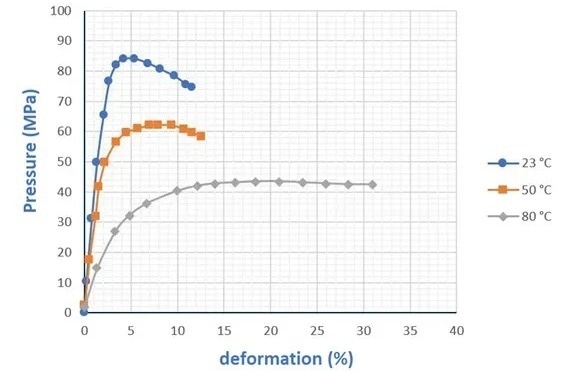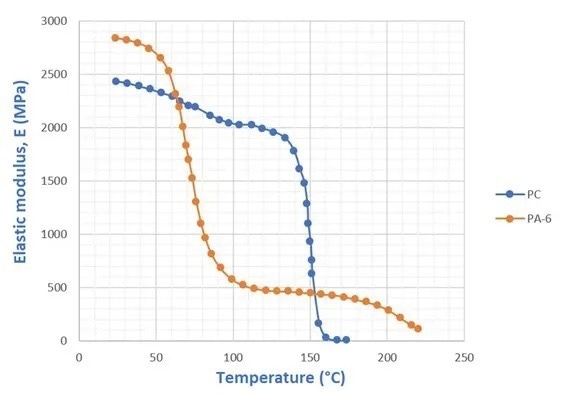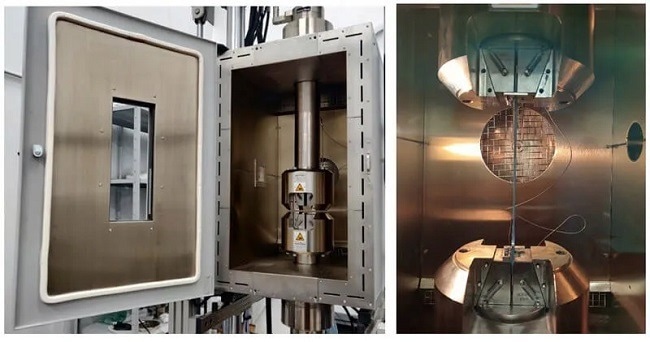Polymers are useful in many applications, but their mechanical properties can be greatly transformed under extreme temperatures. Knowing their performance in elevated or sub-zero temperatures is critical as polymers show various responses, influencing their reliability and functionality in different applications. This temperature-dependent nature of the material properties and the use expectations across various temperature ranges begs the question: Why settle for an industry that offers material properties only at specific temperatures?

Image Credit: AIMPLAS
The automotive industry is a key example because plastic components, such as seals and connectors, handle diverse temperature ranges over their lifespan. These temperature variances require distinct behaviors. Low temperatures, impact resistance, and flexibility are critical to preventing rigidity, while at higher temperatures, dimensional stability, and thermal resistance become important. Ensuring these properties is essential to preventing deformation and ensuring long-term reliability.
Understanding this thermal duality is crucial for understanding and characterizing the mechanical properties of polymers in a variety of real-world conditions.
Some materials can become brittle when exposed to low temperatures, whereas others demonstrate impressive resilience. This key understanding is fundamental to understanding polymer behavior in cold environments. Alternatively, high temperatures offer challenges in polymer resistance, typically resulting in transformations in flexibility. These insights are important for accurately predicting material performance in elevated temperatures.
The figure below demonstrates the relationship between strain, stress, and temperature in order to understand these behavioral shifts:

Figure 1. Stress-strain curve of a Polyamide 6 (PA-6) at different temperatures. Image Credit: AIMPLAS
The graph highlights that the material’s mechanical properties drastically alter according to temperature and that the same materials lose stiffness and resistance as the temperature rises.
Figure 2 demonstrates the variety of one of the most relevant tensile properties, the Young Modulus (E), with the temperature of two technical polymers, such as polycarbonate (PC) and polyamide 6 (PA-6).

Figure 2. Variation in the elasticity at various temperatures. Image Credit: AIMPLAS
As shown, polymers indicate non-uniform responses to temperature fluctuations, which means the materials with high modulus at room temperature can quickly lose these properties as the temperature rises. Generally, thermoplastics undergo significant alterations in tenacity and rigidity, whereas thermoset plastics commonly keep their properties through various temperature ranges.

Figure 3. Temperature chamber with a system with clamps for testing traction properties. Image Credit: AIMPLAS
How Can AIMPLAS Help Your Company?
Understanding the effects of temperature on the mechanical properties of polymers reveals an array of opportunities for practical application and innovation.
AIMPLAS embraces exploring the inherent complexity of polymer materials. By performing tests over a range of temperatures, from -70 °C to 250 °C, their temperature chambers are utilized for compression, tensile, and bending tests that comply with ISO and ASTM regulations. This integrated system guarantees reliable and efficient management throughout testing, ensuring quality and precision.

This information has been sourced, reviewed and adapted from materials provided by AIMPLAS.
For more information on this source, please visit AIMPLAS.